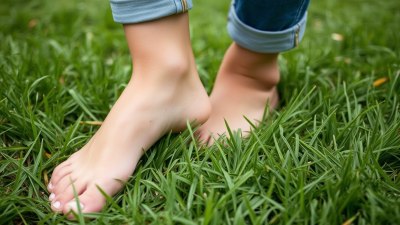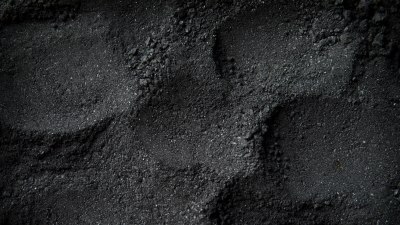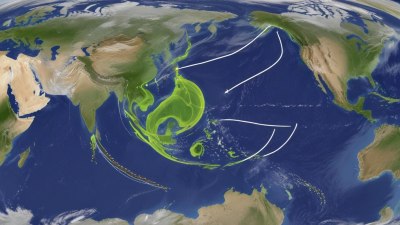Why Park Grass Only Feels Inviting When It's Not Wet, Dry, or Full of Bugs
Explore why park grass feels most inviting only when it's neither wet, dry, nor infested with bugs, revealing the science behind this everyday experience.

Image created with Flux Schnell
Walking barefoot on park grass can be one of the simple pleasures of life, evoking feelings of comfort, relaxation, and connection to nature. Yet, oddly enough, this sensation seems to hinge on very specific conditions. When the grass is wet with morning dew or recent rain, it can feel cold and slippery; when it's dry under a scorching sun, it may feel rough and unyielding; and when insects abound, the grass often becomes a source of annoyance rather than relaxation. This article delves into why park grass only feels truly inviting when it's neither wet, dry, nor teeming with bugs, blending insights from botany, ecology, sensory science, and human psychology to unravel this familiar yet overlooked experience.
The Physical Sensations of Walking on Grass
The experience of walking on grass is a tactile one, involving the skin’s interaction with the grass blades, the soil underneath, and the surrounding environment. Grass, by nature, offers a soft, fibrous surface cushioned over soil, which can be forgiving to bare feet. However, this comfort is highly variable depending on moisture levels and temperature.
When grass is wet, a layer of water on the blades creates a cold and sometimes slippery surface. The water acts as an additional thermal conductor, drawing heat away from the feet, which can feel chilling especially during cooler parts of the day. Aside from the cooling effect, wetness causes grass blades to stick together and to the skin, which can feel sticky or uncomfortable for some.
In contrast, dry grass exposed to prolonged sunlight often becomes brittle and coarse, losing the soft, pliable texture that makes it pleasant to walk on. The dry environment can cause grass blades to lose flexibility and become sharp at the tips, which can scratch or prick skin. Moreover, dry grass tends to trap heat making the experience physically uncomfortable on hot days.
The Role of Moisture in Grass Texture and Comfort
Moisture levels play a crucial role in the tactile quality of grass. Grass requires a balance of hydration to maintain its structure and softness. When adequately watered, grass blades remain upright, flexible, and velvet-soft, providing a cushy, inviting surface.
Dew or light moisture is often considered the most pleasant because it hydrates grass without saturating it. However, once the grass is soaked or muddy, the presence of water breaks the friction balance, making surfaces slippery and prone to causing slips. Furthermore, over-saturation often leads to soil compaction beneath the grass and can trigger fungal growth, which may alter the grass's texture and even release unpleasant smells.
Conversely, when moisture depletes during drought or high heat, grass not only becomes rough but can even start to yellow and die back, changing its texture and prompting discomfort for anyone walking barefoot.
Why Bugs Affect the Appeal of Grass
Bugs, including ants, ticks, mosquitoes, and various beetles, are natural inhabitants of grass ecosystems. While they are critical to the health of the environment by pollinating plants, decomposing organic matter, and serving as food for birds and other wildlife, their presence can influence human comfort negatively.
On warm days, parks might teem with bugs attracted by the sunlight and proliferation of nectar or organic matter. Many of these bugs tend to crawl on or around grass blades, sometimes landing on or biting people who walk through the grass. For many individuals, this interaction can trigger discomfort, fear, or allergic reactions, significantly reducing the grass’s inviting quality.
Ticks, especially, have been a notorious concern. Their tendency to hide in tall or dense grass poses health risks, making people wary about lingering on or walking barefoot through areas with abundant bug activity. This fear reduces the overall appeal and emotional comfort people associate with grassy parks during bug-heavy periods.
The Psychological Influence of Environmental Context
Our perception of grass comfort is not only physical but psychological. Natural environments like parks create complex sensory contexts involving sight, sound, smell, and touch. The emotional response to grass is linked to the overall experience of the park, including weather conditions, crowd density, and the presence of wildlife.
On dry, hot days, the visual appearance of grass might shift from lush green to brown or patchy, signaling drought and neglect. This visual cue leads to subconscious associations of discomfort or desolation. Likewise, when bugs are prevalent, heightened awareness and fear of bites can sharpen a person’s discomfort and reduce feelings of safety and relaxation in the environment.
During mild, temperate conditions, with balanced moisture and minimal bugs, the park feels more inviting. This is when people tend to relax more completely, recreational activities increase, and tactile sensation from grass becomes predominantly pleasant. The mind’s interpretation aligns with sensory cues, creating an optimal setting for resting and play.
Botanical Adaptations of Grass to Environmental Conditions
Grass species have evolved various adaptations to thrive across differing moisture regimes, insect stresses, and soil types. For example, cool-season grasses (like fescues and bluegrass) prefer moderate moisture and do poorly under drought, becoming brittle and less soft. They maintain their softness best in balanced moisture conditions.
In contrast, warm-season grasses (such as Bermuda or buffalo grass) are more drought-resistant but tend to have sharper, rougher blades that can feel less comfortable barefoot, especially when dry. These species often grow sturdier and more fibrous, which can deter herbivores but also affect human tactile experience.
Grass also uses chemical defenses—like producing secondary metabolites that repel certain insects or reduce fungal infections under moist conditions. These chemical traits, while beneficial for plant survival, can influence human skin contact sensations, sometimes causing mild irritation if the grass is brushed too firmly or rubbed for prolonged periods.
Microclimate Effects on Grass Comfort
Microclimates within parks play a subtle but important role in how inviting grassy areas feel. Shaded areas tend to retain more moisture and have less intense sunlight, thus grass in these zones is more likely to feel cool, soft, and less dry. Such areas also tend to host fewer sun-loving insects, reducing bug density.
Open, sunny grassy areas often heat up quickly and dry out, creating less hospitable conditions both for soft grass and for human comfort. The increased sunlight can attract certain insects but discourage others, altering the bug community and thus the likelihood of unwanted insect encounters.
Additionally, soil composition impacts the retention of water with sandy soils drying out fast and clay soils holding moisture longer, influencing grass softness and moisture balance.
Health and Hygiene Considerations
Walking barefoot on grass carries both benefits and risks. On the positive side, direct contact with natural surfaces can improve foot muscle strength, stimulate nerve endings, and foster mental well-being from nature immersion.
However, wet or bug-infested grass can harbor microorganisms, fungi, or parasites that may cause infections or skin irritations. For example, puddles in grass may promote fungal spores, while insects like chiggers or ticks carry risks for skin itch or disease transmission.
Maintaining park cleanliness through regular mowing, pest management, and proper irrigation can reduce these hazards, encouraging safer and more pleasant human interaction with grass.
Strategies to Enhance Grass Invitingness in Parks
Park managers and urban planners can implement various strategies to ensure grassy areas remain inviting. Regular watering schedules help maintain optimal moisture, especially without overwatering that leads to mud or fungal growth. Selecting appropriate grass species suited to local climate prevents dryness or brittleness.
Mowing practices influence grass texture. Frequent, proper mowing encourages dense, lush growth with softer blades, whereas irregular cutting creates patchiness and woody grass. Pest management including natural predators, insect traps, or organic repellents helps control bug populations without excessive chemical use.
Creating shaded zones, using mulch, or planting companion vegetation supports microclimate regulation, maintaining comfort for visitors. Encouraging visitors to wear light footwear can also balance the desire for tactile contact with protection from discomfort or bites.
Seasonal Variations and Their Impact on Grass Appeal
Throughout the year, seasonal changes affect grass conditions profoundly. In spring, rains hydrate grass and bugs begin to emerge, creating a balance that can feel both inviting and occasionally bothersome. Early morning dew can chill, but midday warmth softens the grass.
Summer often presents the greatest contrasts—dry heat can parch grass and amplify bug activity like mosquitoes, reducing comfort. Autumn usually brings cooler temperatures and less insect activity, though fallen leaves may hide bugs or debris. Winter may cause ground frost and dormancy in grass, making surfaces hard and unyielding.
Visitors tend to prefer late spring and early fall for grassy park visits, when conditions are mild, moisture levels are balanced, and bugs are fewer.
The Role of Cultural Perceptions and Personal Experience
Cultural attitudes towards nature heavily influence how individuals perceive the invitation of grass. Some cultures highly value barefoot walking in natural areas as a spiritual or health practice, enhancing the emotional appreciation of grass. Others may prioritize cleanliness or pest avoidance, causing them to view grassy areas with suspicion or discomfort when conditions are wet or buggy.
Personal experience also shapes reactions; individuals accustomed to walking barefoot in varied conditions may tolerate or even prefer grass under minor wetness or insect presence, whereas others may avoid grass unless conditions are perfect.
Such psychological filters create diverse preferences and behaviors around what makes park grass inviting or not.
Biophilic Design and Enhancing Nature Connection
Biophilic design integrates natural elements into human environments to promote well-being and comfort. In urban parks, ensuring that grassy areas are maintained for comfort enhances this connection by making nature tactilely accessible.
Designers emphasize the importance of walkable grassy spaces with controlled moisture and insect management to foster sensory engagement without discomfort or risk. This creates powerful positive emotional feedback loops encouraging park usage, outdoor activity, and appreciation for nature.
Providing benches or rugs alongside these grass areas can support those reluctant to touch grass directly, ensuring diverse visitors can benefit.
Innovations and Future Directions
Emerging innovations in turf management are shaping future park experiences. Advances in drought-resistant, insect-repellent grass breeding promise softer, more resilient lawns. Smart irrigation systems that precisely deliver water reduce over- or under-watering, enhancing optimal moisture levels.
Biological pest controls reduce chemical interventions and maintain ecological balance. Urban park designs incorporating varied grass textures and mixed native plantings can modulate both insect populations and physical comfort surfaces.
Additionally, public education on when and how to interact with grassy areas can align user expectations and promote safer, more enjoyable park visits.
The seemingly simple act of walking barefoot on grass thus remains a complex interaction shaped by moisture, dryness, insect presence, and human psychology. Understanding these factors allows us to appreciate the delicate balance behind when park grass truly feels inviting, enriching our connection with natural spaces.











